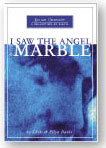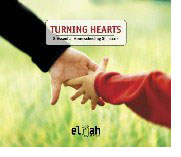
E-journal November 16, 2006 |
“Being thus passed the vast ocean and a sea of troubles before in our preparation, we have now no friends to welcome us, nor inns to refresh our weatherbeaten bodies, no houses, or much less towns, to repair to. As for the season, it is winter, with cruel and fierce storms. In front of us is a desolate wilderness full of wild beasts and wild beings. Behind us is the ocean….” Every year at this time, I read again the stories of the first Thanksgiving in America. Those stories are reminders of the Pilgrims’ struggle to survive. During the first winter, the little food they had was rationed. Often, at a meal, each person received a cup of water and five kernels of corn. For years our family has celebrated a special Thanksgiving tradition. Usually at Thanksgiving my extended family gets together—my sisters, my parents (before my father died), my nieces and nephews, and my own family. There is always a huge feast with turkey, dressing, rice and gravy, two or three vegetables, cranberry sauce, rolls, and several different pies for dessert. When it’s over, everyone is so stuffed they usually all head for a couch or bed to lie down for awhile. But one thing we’ve always done before the feast is have a time of remembrance for all the many things we have to be thankful for. We set each person’s place at the table with a small plate. On that plate are five kernels of corn. It is a powerful image of the blessings God has given us. As each kernel is eaten, thanks are given. The background story It was in the fall of 1620 when those Pilgrims, and the crew of their ship, the Mayflower, set sail from Holland. The voyage lasted 66 days. One hundred and two people began the trip; one hundred two people arrived in Plymouth, Massachusetts on December 11, 1620. One crew member died on the voyage, and one baby was born. The Mayflower remained anchored in the harbor all through that terrible first winter, from December until April. If you've ever been to Massachusetts in winter, you know what it's like. Everyone lived on board the unheated damp ship until shelters could be built on shore. Of the 102 who arrived, only half survived that first winter. Fifty-one died: 27 men, 10 children, and 14 of the 18 married women. William Bradford, their leader, noted in his journal, “Death visited us daily, and with so general a disease that the living were scarce able to bury the dead, and the seven who were well were not in any measure sufficient to tend the sick….” For months, people had only a meager amount of food that was rationed among them; often just five kernels of corn. As the first kernel is eaten, we try to imagine ourselves as one of those Pilgrims who sailed to American seeking religious freedom. Imagine for a moment what it is like to leave your home and your extended family, many of your friends, your work, almost all of your belongings, and set sail for a new world that, most likely, no one you know has ever seen. Imagine doing that for your faith, for what you believe and value, for the freedom to worship as you choose, for the freedom to know God in your own way. Imagine that your minister, John Robinson, your spiritual leader, is not allowed to go with you. But he comes to speak to you on the day you leave, and he says to you, “Remember: God has yet more truth and light to break forth from God’s holy word….” The second kernel has to do with seeing what is missing in our view of life. There was not another recorded Thanksgiving feast for 53 years, not until 1676. This is the part of the Thanksgiving story that calls us to look over our shoulders and check out who is not included, who may be forgotten, or who may bear the burden of our good fortune, our plenty. During the 53 years between Thanksgiving feasts, the Pilgrims, who had survived mainly because of the generous good will of Squanto and other Native Americans, had grown in numbers and, a generation later, had been joined by a variety of other settlers from England and Europe. By 1676, the European settlers were driving the Native Americans off their land and killing them in great numbers. That Thanksgiving proclamation of 1676 declared June 29 as a day of thanksgiving during which these settlers could “express their thanks for their victories in the war with the heathen natives of this land.” That is the other side of the Thanksgiving story, and if you were to go now to Plymouth, Massachusetts, you could join Native Americans on Cole’s Hill on Thanksgiving Day to commemorate a Day of Remembrance and Mourning for Native Peoples. In the midst of celebrating our thankfulness for this country and for our lives, we can remember to look over our shoulders and ask ourselves, "Who is missing? Who is not welcome at the Thanksgiving table?" We have had, in this country, many, many excluded peoples:: Native Americans, so-called witches and women in general, slaves, immigrants, people of color…. Kernel #3 Kernel number 3 has to do with blessings for our country. I can never hear “America the Beautiful” without crying—especially the verse about “Oh beautiful, for Pilgrim’s dream that sees beyond the years.” What a dream they had! In spite of all the problems in our country, we are still the most favored nation on earth and a model of abundance and generosity that almost every other nation aspires to and receives help from. We are very, very fortunate to be in a country that has written in its declaration of independence that we are entitled to “life, liberty, and the pursuit of happiness.” The fourth kernel of corn is about thankfulness for the many blessings in our lives. Even when times are hardest, when it feels like my life consists of just five kernels of corn, there is still so much to be grateful for. One of the secrets to happiness is to be grateful for everything you have, so I make it a practice to write a “gratitude list” as often as I can. No matter how bleak life looks, there is always something I can be grateful for. Like the fact I have a car, or have a roof over my head, or have friends who will help me if I get into a jam. I recently drove with my son Seth to Arizona, and when we were passing through Amarillo, TX we stopped to eat lunch. When we came out of the restaurant, a woman about my age approached me. She was missing all her front teeth, but otherwise looked neat and well-dressed. She told me that her husband had hit her and knocked her bridge out and she had ran out of the house and was trying to make it to her son’s place in another part of Texas. She had gotten as far as Amarillo when she needed gas and ran out of money. I’m always skeptical about these kinds of pleas for a handout, but I thought, “My God, what if that woman were me and I had to depend on the kindness of strangers to get me to safety?” So I gave her all the cash in my wallet. She was extremely grateful, even though it was only about $30, and she said, “Thank you, now I can finally get something to eat.” I was holding a take-out bag from Olive Garden in my hand with my leftovers and offered them to her. She eagerly took it and was effusive with her thanks. I don’t know whether that woman scammed me or not, but I left Amarillo praising God that there was little likelihood I would ever wind up in her same situation. The final kernel has to do with gratefulness for Jesus Christ. For the fact that we are so valuable to God and He loves us so much that “while we were yet sinners” He was willing to die for us.
If you haven't had a chance yet to tell me what home schooling means to you, please GO HERE NOW. It will just take you a few minutes and your input is invaluable to me. Thanks! WHAT HOME SCHOOLING
|
SALE PRODUCTS!
Limited Quantities
This book represents the best of 15 years of Elijah Company articles. Find our more HERE>> Turning Hearts: Davis Seminar Set (8 CDs)
Here are a couple of traditional Thanksgiving crafts for the whole family to enjoy. Be sure to sign up for our ejournal!
Sign up below. |






 Supplies:
Supplies: